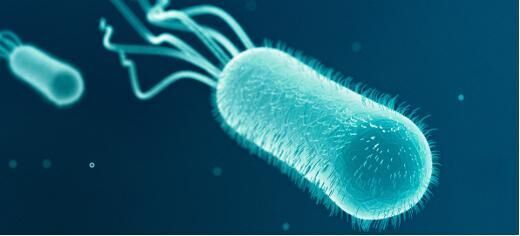
Scientists at the University of Leeds think we may be able to drown deadly bacteria in their own paperwork.
A research team in the University’s Astbury Centre for Structural Molecular Biology has identified for the first time how the “paper shredder” that keeps the bacterium E. coli on top of its day job works.
Now the group are looking for ways to jam the mechanism and leave E. coli and similar bacteria in filing hell.
Dr Kenneth McDowall, Associate Professor in Molecular Microbiology, who led the research, said: “If we block the ‘shredder’ using genetics in the lab, the bacteria drown in a flood of messages. The challenge now is to block it with drugs so that bacterial infections in humans can be killed. Our latest results give us a good idea how this can be done.
“Bacteria are constantly firing off instructions telling the molecular factories inside them what to do, and where and when to do it. It is absolutely critical in this situation, not only for the factories to act on those instructions, but to destroy them once they have been completed. Otherwise, everything becomes chaotic. This is where the “shredder” comes in,” Dr McDowall said.
“I am sure anyone who has ever worked in an office will relate to this. If you come back from holiday and find lots of messages, you struggle to work out which ones should be given priority. It would be much easier if the obsolete ones were automatically destroyed,” he said.
The “shredder” in the harmless version of E. coli studied by the Leeds team is an enzyme called RNase E. Although it was known to have a role in destroying instructions (messenger RNA) copied from the genetic blueprint (DNA), its mechanism was not understood.
The new research, published in the journal Nucleic Acid Research today, describes how RNase E can cut at many sites internal to messages to prevent them being re-read. This shredding of the messages helps to explain how bacteria like E. coli are able to prioritise the thousands of instructions required for them to replicate.
A member of the team, Mr Justin Clarke, said: “This ‘shredder’ helps the bacteria to respond quickly to its environment by making them focus on current rather than old messages. We are now working on how to target RNase E with a new type of antibiotic drug. The exciting thing is that RNase E is found in many pathogenic bacteria as well as the harmless strain of E. coli we study in the lab.”
The discovery has implications beyond antibiotic design. It also provides crucial information for synthetic biology, the branch of science that designs and builds artificial biological devices and systems.
Senior researcher Dr Louise Kime said: “One of the most exciting developments in biology is the creation of synthetic organisms that are completely controlled by man-made instructions. Our work provides us with clues as to how instructions can be made so that they persist long enough to be read, but not so long that they result in information overload.”
The research was funded by the Biotechnology and Biological Sciences Research Council (BBSRC).
Further information
Contact: Chris Bunting, Senior Press Officer, University of Leeds; phone: +44 113 343 2049 and c.j.bunting@leeds.ac.uk.
The full paper: Justin E. Clarke, Louise Kime, David Romero and Kenneth J. McDowall, "Direct entry by RNase E is a major pathway for the degradation and processing of RNA in Escherichia coli," is published on the open access Nucleic Acids Research website. (DOI:10.1093/nar/gku808). Copies of the article are available on request to members of the media from the University of Leeds press office.